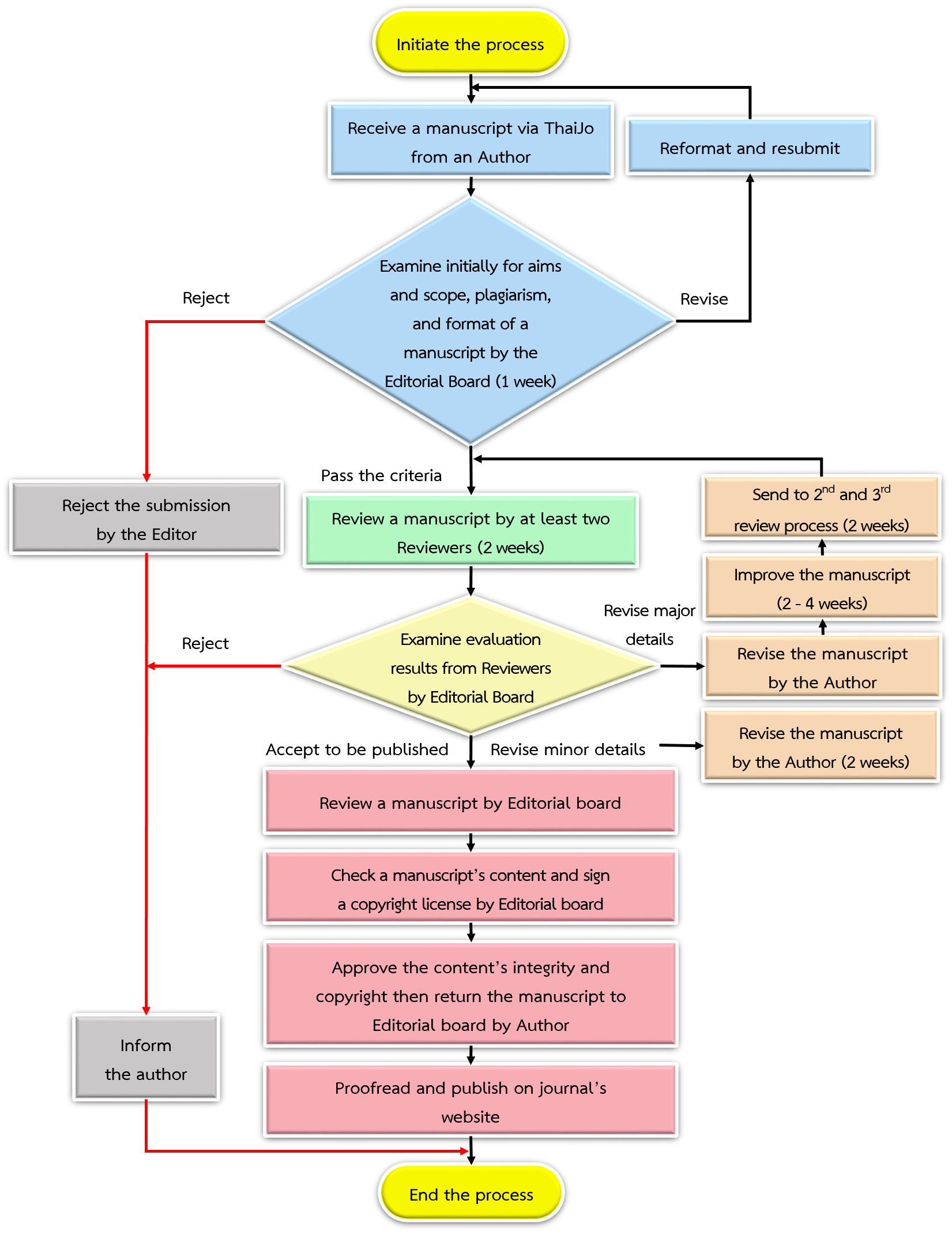Peer Review Process

1. Initial Examination
When an Author submits a manuscript to the Editorial Board, the Editorial Board will examine the congruency of aims, scope, content, and format of a manuscript's correctness that is regulated by the journal. If a manuscript is incongruent with the criteria, that manuscript will be rejected immediately without further examination. If a manuscript has a similarity rate higher than the journal's limit, that manuscript will also be rejected in this step. The Editorial Board examines a manuscript's format and references to ensure compliance with the mentioned Authors' guidelines. If a manuscript is incongruent, it will be returned to be revised, which may be returned many times within one week's timeframe, if needed. When a manuscript passes the examination and revision, it will be sent to the next step.
2. The review process of manuscript
The Editorial Board selects reviewers to evaluate a manuscript. At least two persons have expertise in relevant subject fields and experience in the subject fields of the specific research, come from different institutions, and have no conflict of interest with the Author. The Editorial Board may examine with other appropriate criteria. In addition, a manuscript must not indicate the Author’s name and acknowledgment of supporters, both in the content of the manuscript and the title, to ensure neutrality and high quality. Journal of Buddhist Anthropology is dedicated to sending a manuscript to reviewers as soon as possible. Reviewers will evaluate the quality of a manuscript, integrity of the process, and consistency in the content. Reviewers have two weeks to critically evaluate a manuscript. Reviewers have beneficial suggestions for an Author to improve a manuscript, and they may have comments for acceptance, rejection, or additional requirements for revision.
3. The examination of evaluation results
The examination of evaluation results for acceptance, rejection, or additional requirements for revision is a duty of the Editorial Board by examining the suggestions from reviewers and compliance with the Authors' Guidelines for decision-making. The Editor will inform the evaluation results (whether acceptance, rejection, or additional requirements for revision) to the Author via the online system with suggestions from reviewers.
4. Revision Process
In case of receiving responses and revision requests, an Author will be required to revise a manuscript according to suggestions from reviewers, and then the Author will return a revised manuscript, which has revised content with highlighted marks. A revised manuscript has commentaries and arguments that refer to reviewers' suggestions. Typically, an Author has two weeks (for minor revision) or 2 – 4 weeks (for major revision/important details) to finish the revision. In case of revising the important details, a revised file will be evaluated for a second time by the same reviewer within a two-week time frame to evaluate whether the revision is adequately consistent with the suggestions from reviewers. In case of minor revision, a second evaluation from reviewers may not be required.
5. Publication
When a manuscript passes the examination for preparation to be published in the journal, the Editorial Board checks a manuscript's content and signs a copyright. An Author must approve the integrity of a manuscript's content and copyright and return a manuscript to the journal. Nonetheless, the journal has a rigid process of proofreading and critical evaluation of details according to academic integrity and ethical standards, ensuring there is only the publication of the highest quality articles within a week's time frame.







